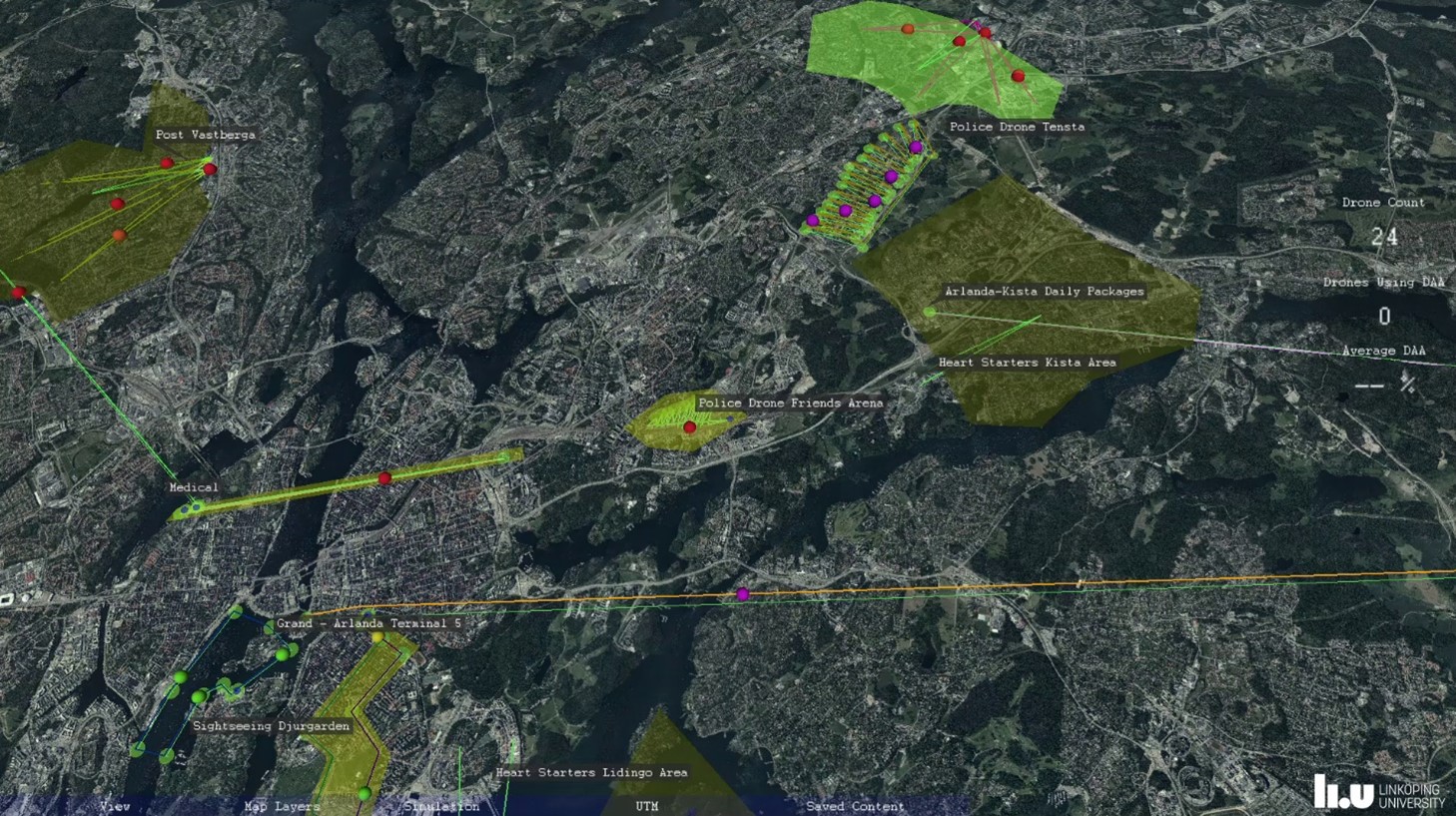
According to a Linkedin post by Professor Lundberg:
“To understand urban air mobility, visualization can be a powerful tool. Using our simulator UTM CITY, we explore two main questions: How can the airspace and traffic be controlled, by operators working together with artificial intelligence and automation – in a Unified Traffic Management system and how can stakeholders in different regions model their own airspaces and services, to understand benefits and risks?
“The video shows how the simulator works, including a scenario from the Stockholm region on medical transports. Through the simulator, services and airspace constraints can be added and adjusted while the simulation is running.”
The UTM simulator system shows how a series of medical deliveries by drones can be plotted through the urban sky, with the airspace architecture dynamically adapted to take account of detect and avoid manoeuvres, or unplanned events such as forest fires, showing the how routes can be quickly adapted.
According to the project’s website:
“The UTM CITY project is based on the research through design methodology. According to the methodology, a design (UTM concept) is constructed at the same time as a context is built up (a simulated urban environment with drone traffic) together with problem owners and other stakeholders. Supporting this method, we build a simulation and visualization enviornment, UTM CITY, where designs and situations can be tested.”
For more information:
https://www.linkedin.com/feed/update/urn:li:activity:7103373508948164609/
https://ivis.itn.liu.se/research/projects/utm_city.html

